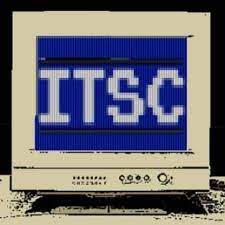
 Phishing has long been a primary tool in the hacker’s arsenal, but like military weapons, their tactics evolve. A phishing attempt in 2025 looks different from those in 2015, 2020, or even last year. Therefore, managed service providers (MSPs) must continually stay informed about evolving methodologies employed by malicious actors.
Phishing has long been a primary tool in the hacker’s arsenal, but like military weapons, their tactics evolve. A phishing attempt in 2025 looks different from those in 2015, 2020, or even last year. Therefore, managed service providers (MSPs) must continually stay informed about evolving methodologies employed by malicious actors.
Combating human error
Jason Miller, founder and CEO of MSP BitLyft Cybersecurity, shares that phishing attacks are designed to exploit human error, making them difficult to detect and even harder to defend against with traditional security tools.
“Cybercriminals use deceptive emails, fake login portals, and social engineering tactics to trick employees into disclosing sensitive information or downloading malware. These attacks exploit the human element to bypass even the most advanced perimeter defenses when users aren’t prepared,” Miller tells SmarterMSP.com. In that sense, the premise of phishing remains unchanged: exploiting human weakness.
However, there are more effective strategies for prevention, starting with the arrival of artificial intelligence (AI).
“Traditional spam filters often miss sophisticated phishing attempts. AI-powered solutions analyze patterns, language, and sender behavior to identify and block deceptive messages before they reach users,” Miller says. He also adds that security awareness training remains a potent weapon. “Since phishing relies heavily on human error, training employees to recognize suspicious emails, links, and requests is one of the most effective defenses. Regular simulated phishing tests reinforce learning and keep awareness high.”
Of course, multi-factor authentication (MFA) remains another powerful safeguard. MFA ensures that even if credentials are compromised, unauthorized access is prevented. It’s a simple yet powerful way to block attackers from exploiting stolen login information,” states Miller. Real-time threat intelligence is another area where AI can assist MSPs. “Integrating live threat intelligence into your security stack helps detect new phishing campaigns and malicious domains before they can affect your organization.”
Fighting back with AI-powered protection
Hayley Mollett, Head of Marketing for Better-IT, a premium MSP with a heavy emphasis on cybersecurity, explains that her MSP sees firsthand how phishing attacks evolve into more targeted, persistent, and psychologically sophisticated threats.
“Criminals are leveraging AI models—many of the same ones that power mainstream productivity tools—to generate context-aware, well-written phishing emails that mimic internal communication styles,” reveals Mollett, noting that these aren’t scattergun attempts; “they’re tailored to sound like your CEO, accounts team, or a trusted supplier.”
Mollett shares that Better-IT has seen examples where attackers reference real meetings or shared documents by scraping data from public sources, such as LinkedIn and company websites. “These emails slip past traditional filters because they lack the usual red flags—no misspellings, no dodgy formatting, no obvious urgency. They’re conversational, relevant, and highly persuasive,” Mollett explains, and this creates a challenge for MSPs. “This is where MSPs must move beyond keyword scanning and invest in behavioral analysis and machine learning-based email protection that evaluates tone, intent, and context, not just content.”
Specifically, she notes that deepfake voicemails and video phishing are becoming increasingly popular among hackers.
The new frontier of phishing
“Attackers are now using deepfake technology to replicate a known voice, such as a company director, leaving voicemail messages or even engaging in short real-time calls to manipulate staff into transferring funds or disclosing credentials,” Mollett says. She adds that sometimes attackers combine deepfake voice calls with spoofed emails or texts, building a believable narrative across multiple channels. This can result in a staff member who genuinely believes their boss is requesting an urgent payment or asking for help resetting their login credentials.
“MSPs must advise clients on voice verification protocols and promote a culture of healthy skepticism, where even the most familiar voice is verified if the request involves financial or data access risk,” asserts Mollett.
Another evolving phishing threat involves business email compromise and social engineering.
“Business email compromise (BEC) is not just about hijacking an inbox but about building trust. Attackers will sit quietly inside a compromised email account, studying the tone, relationships, and timing of internal communication for weeks before making their move,” Mollett says, adding that Better-IT has seen attackers wait for the exact moment an invoice is due or when a senior executive is traveling, then send an urgent instruction to finance that looks completely legitimate. “These aren’t random attacks—they’re planned, timed, and emotionally manipulative.”
Smarter scams demand smarter defenses
“The layering of traditional BEC with social engineering means that MSPs must go beyond technical controls,” Mollett says. She notes that employee education, real-time monitoring, and enforced verification steps for financial or sensitive transactions are now non-negotiable.
“MSPs must recognize that these attacks aren’t just opportunistic. They’re calculated and often highly contextual,” Mollett expresses, saying that MSPs can fight back with user behavior education. “Training is no longer a one-off PowerPoint presentation. We recommend monthly micro-learning sessions and phishing simulations tailored to the client’s real-world tools.” She also shares that zero-trust implementation is key. “Every user and device must verify itself, internally and externally. Conditional access, identity management, and role-based permissions are foundational now.”
Other anti-phishing steps MSPs can take include implementing advanced threat protection, real-time monitoring, password protection, and MFA as default options.
Mollett explains that today’s phishing has evolved into a form of psychological warfare, and MSPs must evolve with it. “As MSPs, we must evolve from fixers to forecasters—identifying risk patterns before they develop into breaches. MSPs must embed cybersecurity into their service fabric rather than selling it as an optional extra.”
Ultimately, cybersecurity is no longer an optional add-on. It has become a fundamental part of delivering trusted, resilient services in today’s digital landscape. Staying ahead of attackers requires constant adaptation, and that’s exactly where MSPs must lead the way.
Photo: janews / Shutterstock
This post originally appeared on Smarter MSP.

